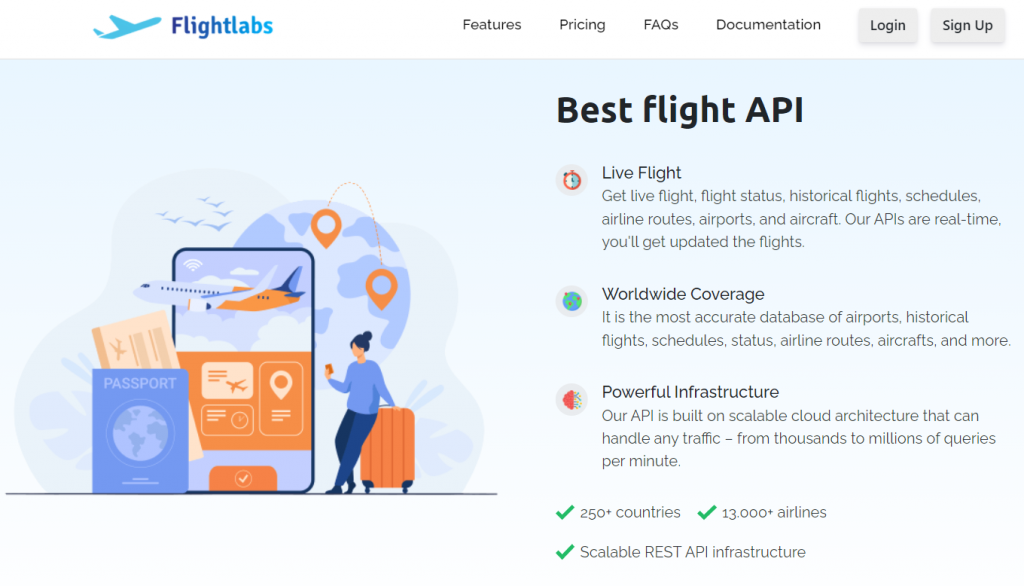Read this article to learn about the latest technologies in the travel industry: Flight Data API.
Miami International Airport (MIA), located thirteen kilometers northwest of downtown Miami, is a major gateway to Latin America and the 11th busiest airport (when measured by passenger traffic) in the United States. In 2014, 40.9 million travelers passed through MIA. The airport is a hub for American Airlines and a focus city for Avianca, Frontier Airlines, LAN Airlines, and TAM Brazilian Airlines.
In total, more than 50 commercial airlines operate at the airport, and nonstop flights are available to destinations in the United States, as well as locations in the Caribbean, Mexico, Central and South America, Canada, Europe, and Asia. Passengers flying through MIA have a number of ground transportation options. These include Metrobus and Metrorail, Tri-Rail, cabs, limousines and shared-ride buses. More than 15 rental car companies have a presence at the airport’s Rental Car Center.
Technology has completely transformed the travel industry in every aspect. One of the main impacts is the empowerment of the traveler. Technology has allowed the traveler to be much more informed and to take a proactive role in the organization of the trip. Tourists are now much more demanding, have several options to choose from, and have the power to negotiate. But they have become not only simple visitors but also generators of content they share with other travelers.
From platforms such as Tripadvisor that allow them to leave opinions and ratings, travel blogs where they share their experiences, and social networks where they publish both the good and the bad of the trip. This active participation of travelers and their high expectations about the experience they want to live, put pressure on travel companies to offer better quality, more variety, innovation, and continuous evolution. Flight Data APIs are essential for this to happen.
What Are Flight Data APIs And Why Are They So Important?
Flight Data API is software that allows the integration of external flight-related information into platforms, apps, and websites. These interfaces cannot work on their own, it is the developers who integrate them through programming language in other sites. Flight Data APIs, for example, are a network of permanent connections to airport and airline information in real-time.
These tools provide the necessary information for coordination and logistics, but also allow for improved data processing, enabling the focus to be placed on providing better customer service. Definitely, implementing a flight data API is a step towards the professionalization of travel businesses. To start with, we suggest you check FlightLabs. This API is very popular for its user-friendly interface that allows you to start using it easily. In addition, it has attributes that are especially valued in the industry.
More About FlightLabs
Having a Flight Data API really makes a difference in the platforms or websites, and the user experience and therefore is key to the development of a business in the travel industry. FlightLabs is popular in the market, because of its impressive and incomparably extensive database, thanks to which it can provide global coverage. In addition, it can provide historical information, and has a response time of 0.01 seconds.
This API works with Artificial Intelligence and has machine learning engines. Thanks to that, the software learns intuitively and improves its performance. It is the best API to start with because of its simplicity and ease of integration, and it is compatible with most programming languages. Don’t wait any longer to start using FlightLabs!



